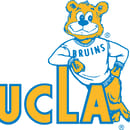I’m a pretty hardcore Disney fan, but I never watched the original Mary Poppins with the legendary Julie Andrews (don’t shoot me). Despite that, I love musicals, especially movie musicals. Coming at it from a fresh perspective, I was curious if Mary Poppins Returns would live up to any sort of hype or preconceptions I had for the franchise.
Before you get all hot and heavy about how Mary Poppins will never be the same without Julie Andrews, let’s clear the air a bit. Mary Poppins is back after after 54 years, but not exactly in the same way. It’s not really a remake since it does not have all the same characters and plot, and it functions more as a sequel since the original Banks children are all grown up with children of their own. That is not to say this film does not honor the original, with a similar storyline, the same house on Cherry Tree Lane and some musical motifs that beautifully float around in the soundtrack.
Now the last time I saw a film meant for children, other than cartoons, was well—when I was a child. I would not describe this movie as plot-driven. Michael Banks, now probably in his early to mid-30s, married and had 3 children, but his wife passed away a year prior to the film’s setting. Jane Banks is now an union organizer, and a loving aunt to her nephews and niece. Michael is an artist, but has recently taken up a part-time job as a teller at Fidelity Fiduciary Bank, the same bank his father once worked at. He had taken out a loan from the bank, but lawyers appear at his door to demand he pay the loan in full within 5 days. If not, the bank will repossess the house.
However, the film does not do much with this plot. Michael does not have money to pay the entire loan at once, but he and Jane do have shares in the bank that their father left them. They spend most of their few scenes searching for the certificate of shares, the only proof they have of their ownership of the shares. In the absence of a strong plot, the characters mostly float around from scene to scene without clear direction, and the pacing ends up slow. Most the movie revolves around Mary Poppins spending time with the three children: twins John and Annabel, and Georgie, singing songs and having fun in the magical lands Poppins takes them to.
A few aspects of the film seemed like totally useless diversions from the plot like the entire scene with Meryl Streep and the Banks’ neighbors Admiral Boom and Mr. Binnacle. Some of the songs also did not really make sense in the context of the plot, other than punctuating the film with some fun such as “A Cover Is Not the Book,” Turning Turtle” and “Trip a Little Light Fantastic.” I suppose since this is a children’s movie, these are meant to teach kids important life lessons, but they are phrased in an odd way.
However, the music and score were absolutely stunning with Marc Shaiman at the helm. Though the song lyrics sometimes made no sense, at least they had beautiful catchy melodies, and a lovely overture that seamlessly summarizes the major musical motifs of the film. Any man who appreciates the strings and French horn can capture my heart. Some songs that really worked were “Lovely London Sky,” “Can You Imagine That?” and “Nowhere to Go But Up.”
Blunt, to her great credit, pulls her weight as the titular character. After her wonderful first turn in a movie musical, Into the Woods, and her other diverse roles in The Devil Wears Prada and The Young Victoria, Blunt proved to the world that she has a pleasant enough voice and acting chops to be cast as Poppins. When she finally appeared in the film, descending down from the clouds with a kite in hand, I got the chills; the scene made her seem as impressive and wonderful as she is meant to be. Her no-nonsense attitude and clipped speech, alongside that beautiful English accent, was easy to love, and her love of fun and the Banks children was endearing.
Manuel-Miranda as Jack, of course, was great. His singing voice is distinct and unique, and he brought a necessary energy in an otherwise rather slow film. Unfortunately, his cockney accent was ridiculously heavy, even in song, and it often came to the forefront of a scene. The little love line drawn between him and Jane Banks was also so sparsely mentioned and conveyed that it might as well have been nonexistent.
The actors playing the three kids were passable enough, but it was really Ben Wishaw who stood out the most. Wishaw just won a Golden Globe for Best Supporting Actor in a Series, Miniseries or Television Film for A Very English Scandal. I remember seeing his face in other films and TV shows, and he’s finally getting the recognition he deserves. He is a vulnerable enough in his grief, and understandable in his occasional frustrations with the children that he is the most sympathetic character. Though still mourning his wife, you can tell the children adore their father, and Wishaw does an excellent job as a loving, yet firm father.
Meryl Streep’s character was baffling; I still don’t have a clear idea of why the screenwriter thought her character was necessary. Colin Firth as Weatherall Wilkins is the villain in the film, though I use the term loosely since Firth has these inherent nice-guy vibes and is so pleasant-looking that it’s difficult to take him seriously as a money-hungry banker. Dick Van Dyke’s brief appearance as Mr. Dawes Jr. left a better and deeper impression than either of the other two.
Despite a lack of momentum and strong plot, the cinematography is splendid. It has been a long time since I saw a genuine title sequence, and it was a strong start depicting exquisite oil paintings of London and that excellent overture playing over. London in 1935 is wonderfully shot as gloomy, foggy and dreary, still the same industrial city it had been for decades, and occasional spots of light illuminated by street lamps. The grey color palette of London defines the harsh reality of life that the adult Michael lives in now, yet the inside of his house has warm, homey tones. The costuming also played into this as modern, always hopeful Jane wears bright colors like pink and bright red, whereas serious, pragmatic Michael is clothed in brown, deep green and black.
And however ridiculous, I did love the scenes in which 3D and 2D overlap as Poppins, Jack and the kids jump into a mostly two-dimensional cartoon world. It was fascinating to see the three-dimensional people wear clothing that appeared two-dimensional in most angles; seriously costume designer Sandy Powell continues to be brilliant, and those adorable penguins stole the scene.
It was not the most fantastic film of the year. Blunt successfully proves that she is Mary Poppins through and through, in song, appearance and demeanor. It is impossible for her to be Julie Andrews, and it’s not right to expect her to be. She inhabited her own Poppins, and she was lovable as a strict, yet kind nanny. The film requires a good amount of suspension of disbelief to enjoy, but I suppose that is the heart of the film’s message. Sometimes you need a bit of fun and nonsense in life. If you’re dragged into watching it with your young cousin or sibling, it’s not the worst way to spend an afternoon.


